How to use a wormery for compost – a beginner's guide to worm composting
Find out how to use a wormery for compost and turn kitchen waste into nutritious food for your garden plants
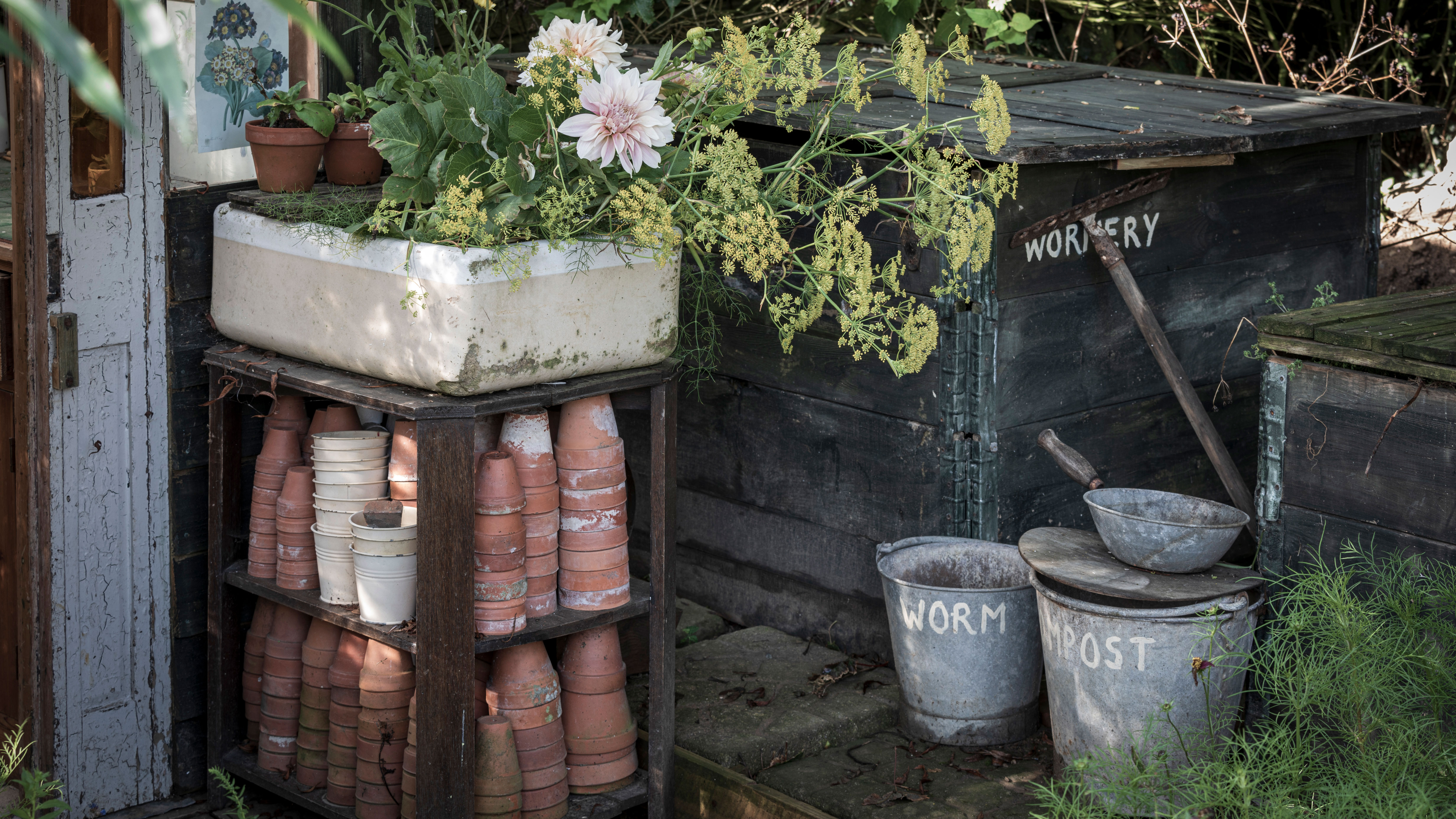

Using a wormery for compost is an easy and environmentally-friendly way of turning much of your kitchen waste into nutrient-rich compost to feed your garden and houseplants.
A wormery doesn't take up much space at all – in fact you can even keep one under your kitchen sink – and will help your plants to thrive. If you are looking into how to make compost it is well worth adding a wormery to your plans, and do your bit to help the environment, too.
Using a wormery for compost – the benefits
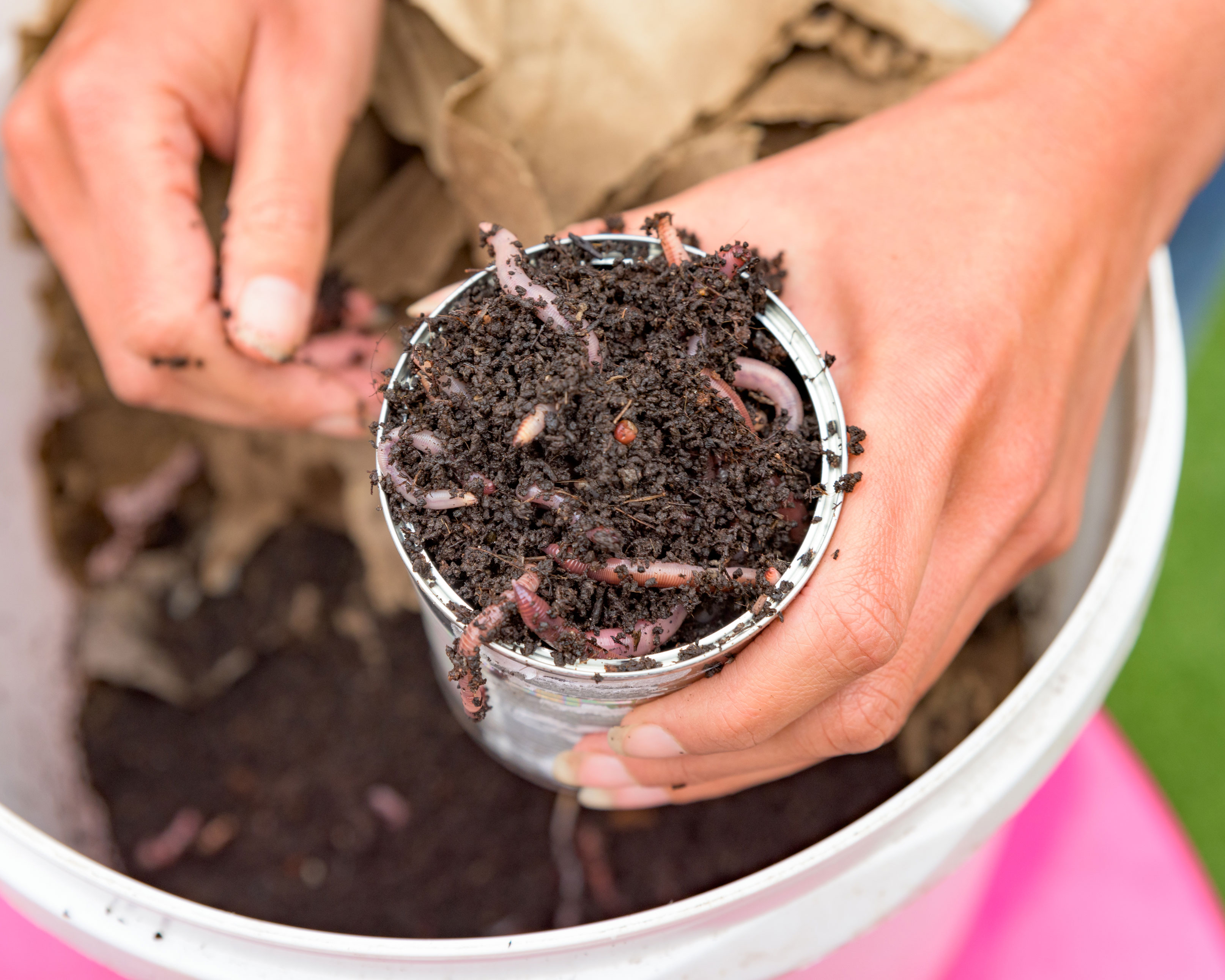
If you are considering permaculture gardening then a wormery is a must.
If you already use or make organic compost from garden waste, you may wonder what is the purpose of a wormery?
The answer is simple: rather than your rotting food garbage ending up in landfill and producing harmful greenhouse gases, with worm composting it is eaten by the hungry worms and transformed into highly concentrated and long-lasting plant food.
'Worms have been recognized for their amazing ability to turn any organic material into a valuable soil fertilizer,' explains Ronnie, founder of Wormcity.
On top of the environmental advantages, using a wormery for compost has many benefits for your garden. 'Worm compost is teeming with minerals and nutrients for healthy plant development – one tablespoon provides enough nutrients for a plant to thrive through a growing season; has excellent moisture retentive properties; contains natural disease and pest controls, and improves soil structure,' explains Anna de la Vega, founder of The Urban Worm.
The worm compost can be used on everything from the flower beds and your vegetable garden, to container plants, houseplants or as mulch.
There are also economic benefits of using a wormery for compost. 'If you consider the cost of purchased organic fertilizer for your garden, even the most expensive wormery could pay for itself in one growing season,' explain the experts at eartheasy.
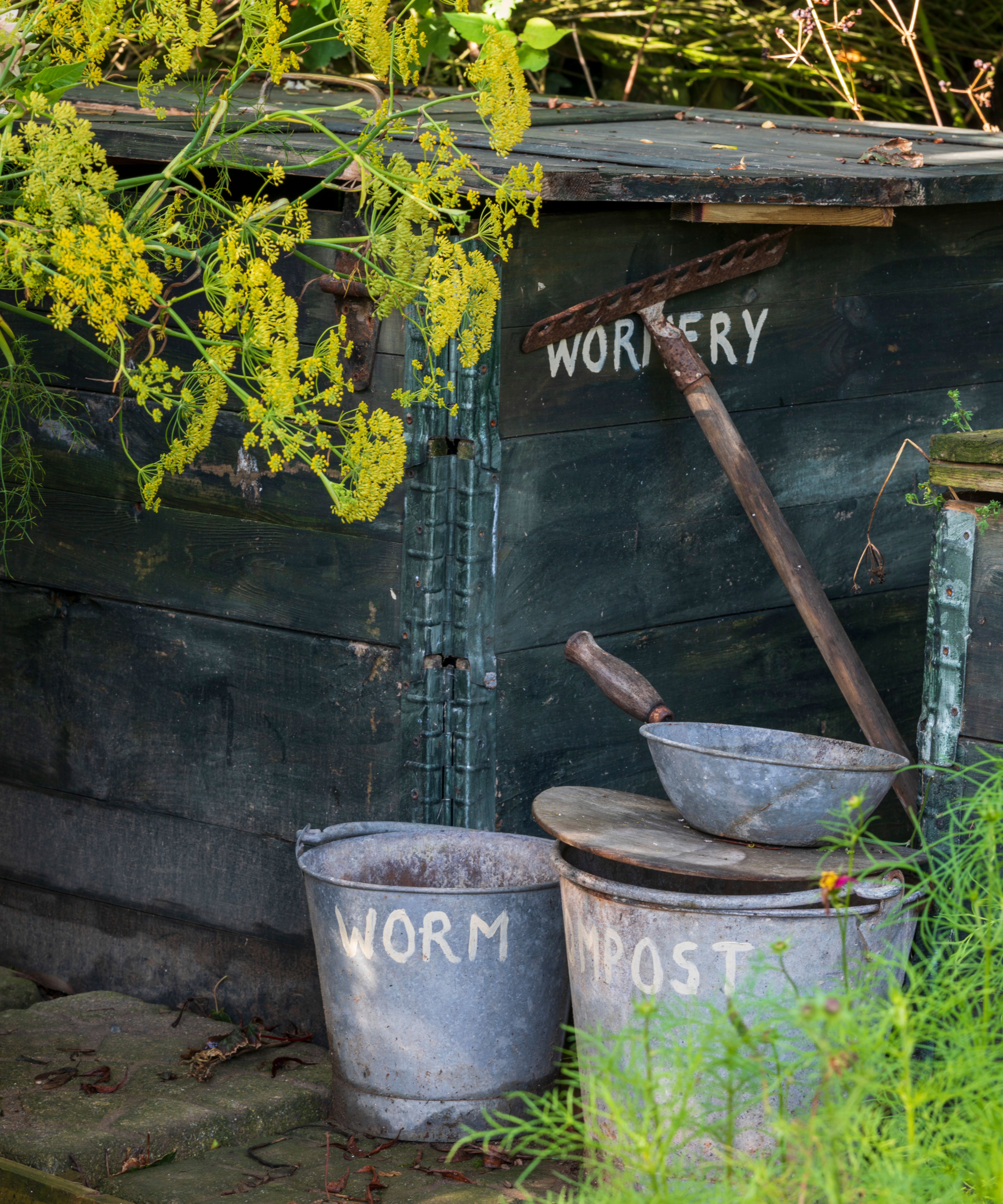
What is a wormery?
A 'wormery or 'worm bin' is a box system that contains composting worms that eat kitchen waste. At its simplest, it's a bin with holes for ventilation and moisture.
'Wormeries are most commonly made up of two compartments. The upper area is where the kitchen waste is added and where the worms get to work, while the lower compartment is the collection area for the liquid that the wormery produces, explains celebrity gardener David Domoney.
The more compartments/trays your wormery has, the more efficient it can be.
'The bi-products produced consist of worm castings – worm poo, manure or vermicompost – and leachate – worm wee, or liquid fertilizer. These are excellent feeds for your indoor and outdoor plants,' explains Ronnie of Wormcity.
Creating a completely natural, organic product that supports natural garden pest control, worm composting could also be added to your wildlife garden ideas.
'Worm manure can be applied direct to plants as a soil conditioner without scorching the roots, but for best results mix at a ratio of 2:10 with regular compost. Leachate can be used as a liquid plant feed when diluted 1:10 with water,' advises Anna.
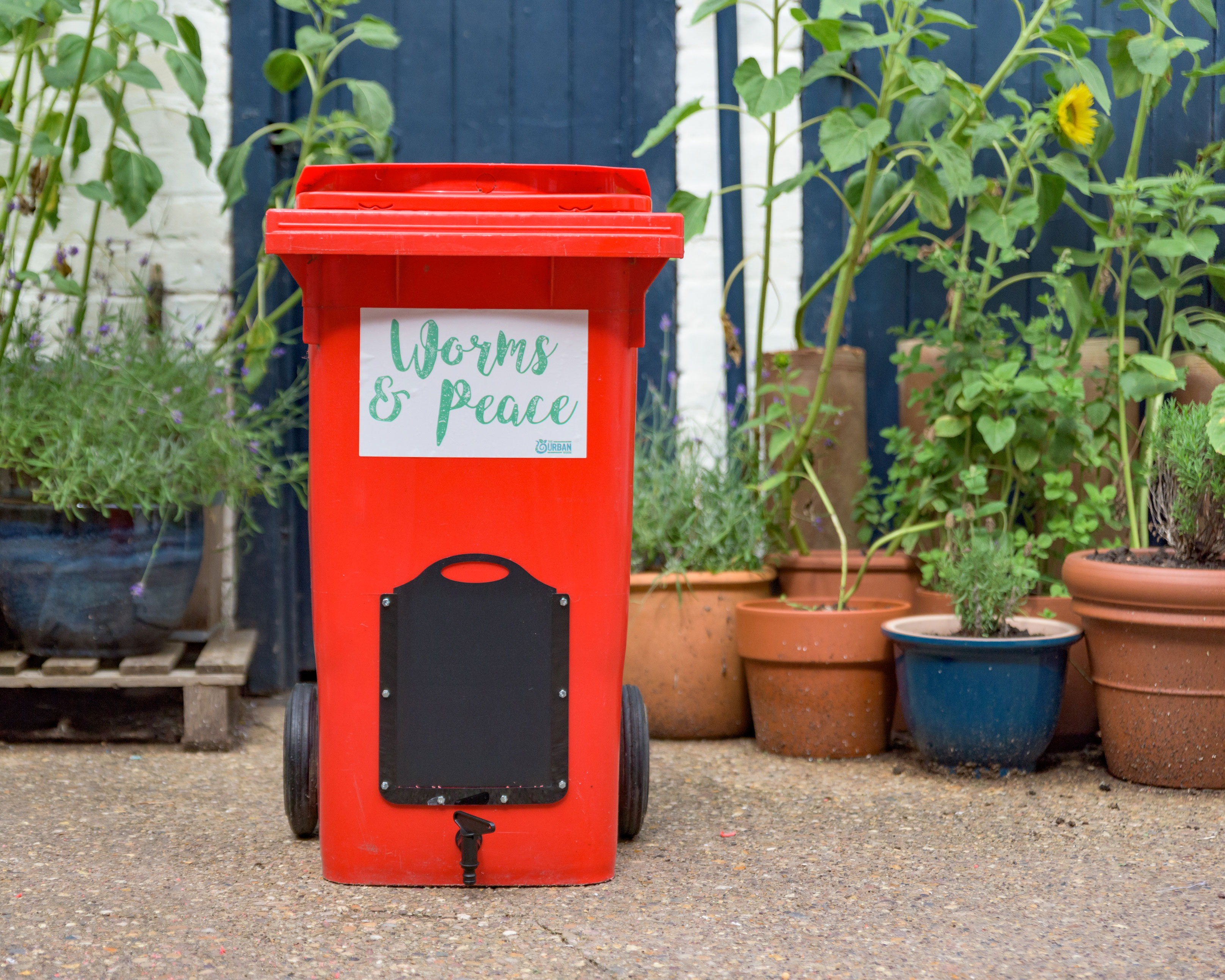
How do you start a wormery for compost?
To start a wormery for compost you can either buy a wormery, or make your own using a variety of non transparent plastic containers, or even use a wheelie bin.
David Domoney offers this guide on how to create a wormery using a large plastic box with a lid. Before getting started:
- Drill some air holes into the bottom of the container
- Add a sheet of newspaper to the bottom, and top with an 8cm deep layer of moist compost for the worms to burrow in
- Then, add the composting worms
- Once they’ve been added, top the compost with 8-10cm of kitchen waste
- Next, cover the surface with a piece of cardboard or newspaper for insulation and water slightly to keep it damp
- Add the lid to the box to keep it waterproof
- Place the container on bricks to raise the container up and allow the air holes to function effectively
The Urban Worm also has some useful step-by-step guides to creating a DIY wormery.
There are various materials you can use for bedding for the worms. 'Damp shredded paper, compost, coconut coir, and well rotten manure are all suitable for worm starter bedding,' explains Anna.
The experts at eartheasy also recommend leaves, straw and egg cartons.
What type of worms are used in a wormery?
There are specific types of worms used in a wormery. Do not think you can dig up all the worms wriggling around your garden for worm composting.
'The most commonly found worm in the garden is the lobworm. Lobs are deep burrowers and will not survive in a wormery,' advises Ronnie of Wormcity.
There are two types of worm that can be used for composting in a wormery, which you can buy online or from fishing-tackle shops:
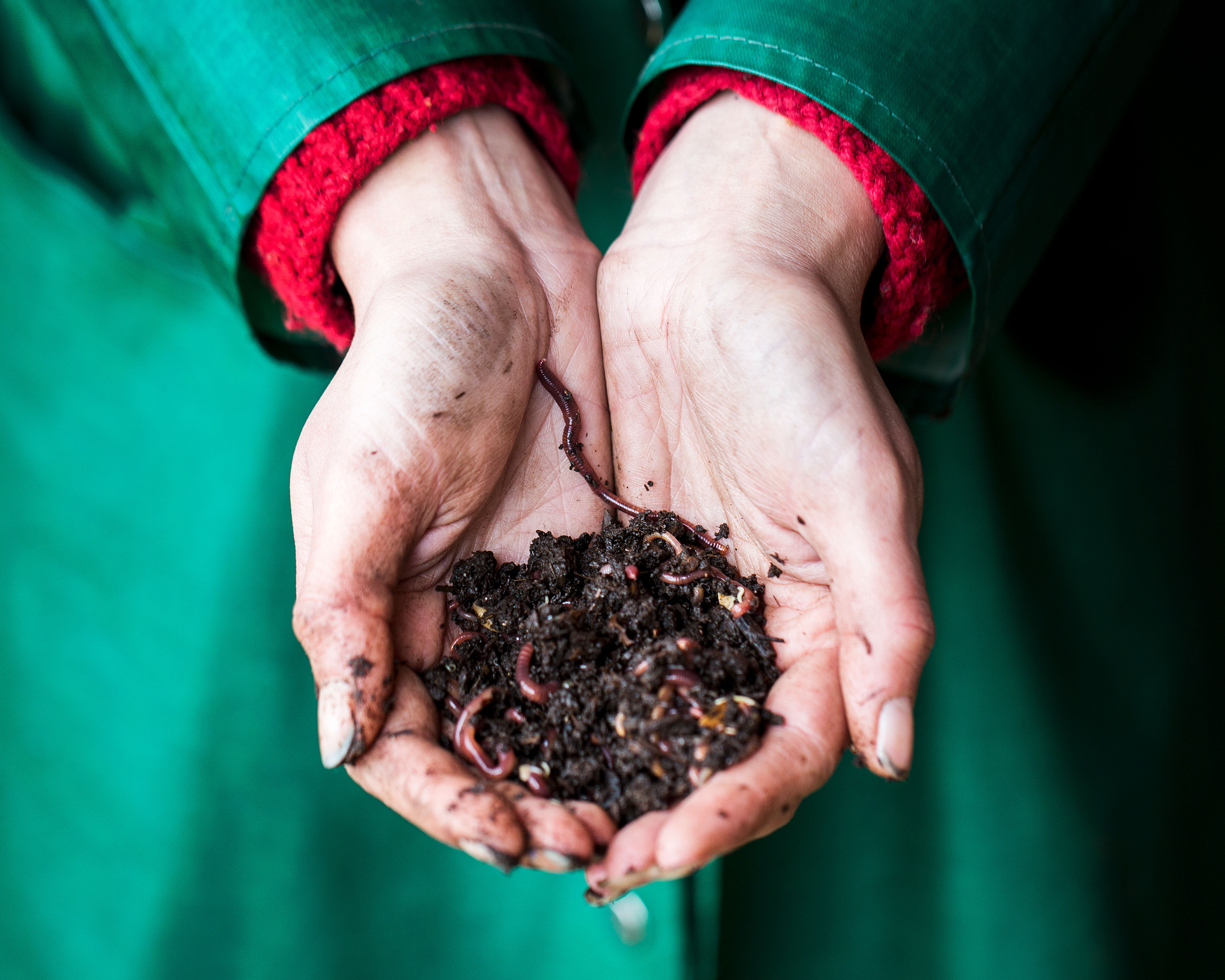
- Red tiger / red wiggler worms (Eisenia andrei/ fetida) also called the brandling worm or manure worm. 'It is either red or stripy and is usually found in manure and compost heaps,' explains Ronnie.
- Dendrobaena (Eisenia hortensis) also called the European Nighcrawler. 'Dendra is the largest composting worm and is reddish brown with stripes all over its body and a cream tip to its tail. It has a preference for damper conditions,' explains Ronnie.
Worms are sold by weight. If you collect your food waste and weigh it, you can see exactly how many worms you’ll need.
The worms can eat half their own weight of waste each day, so 'as a rule of thumb, 200g of worms should be fed 50-100g of food per day,' explains Anna of The Urban Worm.
Also bear in mind that they can double their population every 60-90 days, so don't buy too many according to the amount of kitchen scraps you can feed them.
'We generally advise a household of four to start with 1kg of worms. However, you need to keep an eye on the waste and do not over feed the worms,' says Anna.

What can I compost in a wormery?
You can compost many organic kitchen scraps in a wormery. 'Spoil the worms rotten by adding materials like vegetable peelings, tea bags and coffee grounds as well as small amounts of bread, weeds, and leaves,' explains David Domoney.
'It is always better to add partially decomposed kitchen waste as it is easier for the worms to eat and chopping food finely helps worms to eat it and break it down faster,' advises Anna.
There are some foods to avoid putting in your wormery, including acidic foods. 'Bear in mind that citrus fruits can increase the acidity which isn’t suitable for worms, so if they are added, ensure it’s only in small quantities,' says David.
'The greater the variety of organic wastes you use for worm composting, the better the resultant worm castings will be,' explains Ronnie.
How long does a wormery take to compost?
It will take a wormery a few months to produce compost, depending on the time of year and if it has optimum conditions.
Worms are most active in warm and moist conditions, in temperatures between 64-77ºF (18-25ºC). Their activity decreases noticeably in temperatures below 50ºF (10ºC).
'Worms to go into semi hibernation in the winter, when the temperature drops, and don’t feed or eat as much,' explains Ronnie of Wormcity.
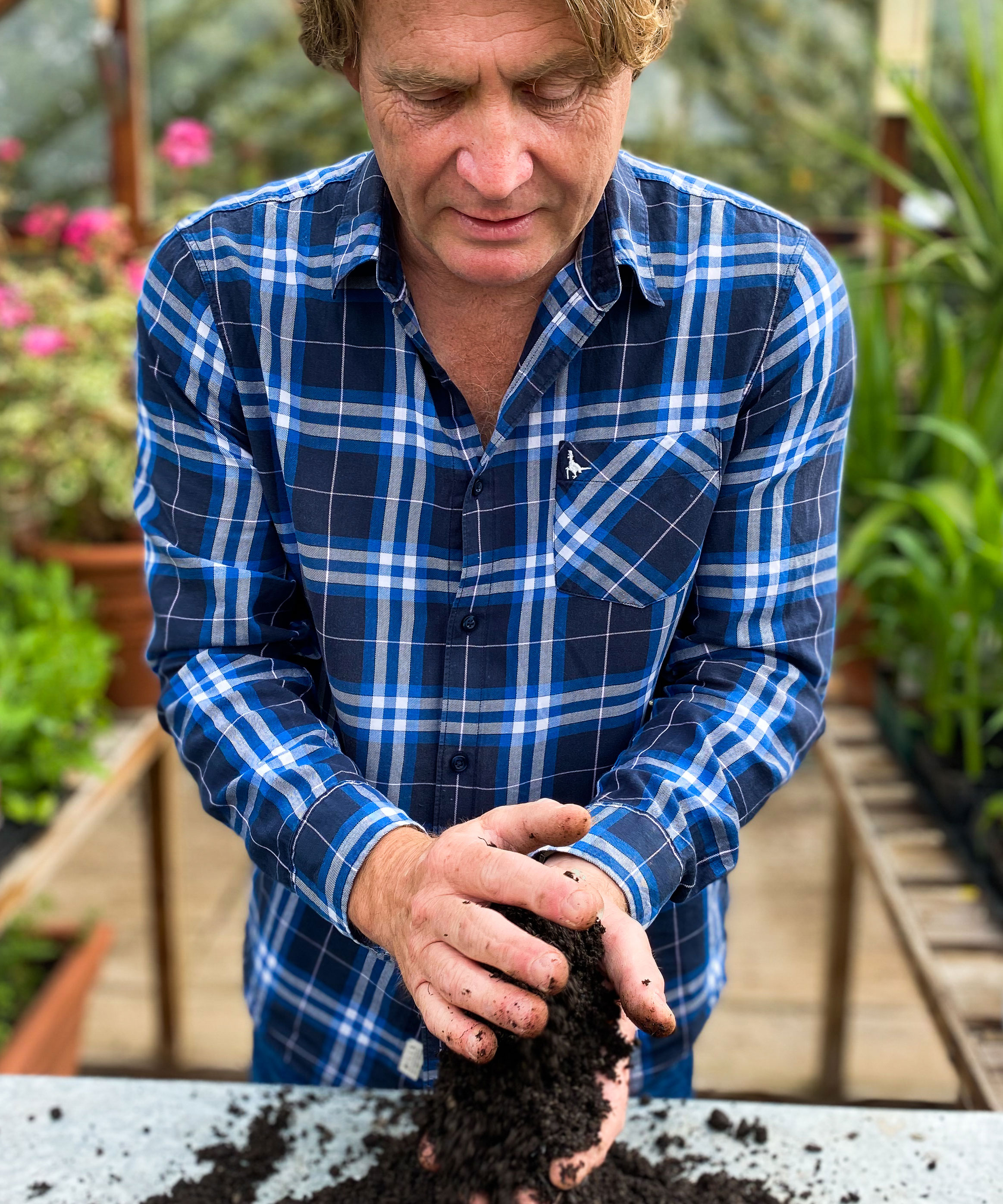
Where do you place a wormery?
You need to place a wormery where it will enjoy the best conditions for the worms. 'Worms are very resilient, but they are most happy living in conditions between 50-85ºF (10-30ºC ),' explains Anna de la Vega of The Urban Worm.
'Keep the wormery out of direct sunlight in the summer, away from strong winds, and in the colder months keep them indoors in a shed or other outbuilding, or wrap them in bubble wrap or a blanket to keep them active. They do slow down in winter,' she adds.
'Against a north facing wall is best as it is out of direct sunlight and protected from strong winds,' says David.
Because the worms are contained, you can store a wormery on a sheltered balcony or in a courtyard, and you don't need a big bin as the compost produced is so concentrated, so they can be incorporated into sustainable ideas for small gardens.
You can even try worm composting if you don't have a garden as the worms are happy living indoors where the temperature remains milder and more constant.

How do you look after the worms?
To look after worms, 'start steady,' advises David.
When you first get the worms for worm composting, they may be a little slow to start eating. 'Begin with small amounts of food and check to see how long it takes them to eat it. Increase the amount until you are adding the equivalent to half their weight daily,' explain the eartheasy experts.
If the kitchen waste is not being eaten, stop feeding for a few days until the worms start to work through the top layer.
'Adding a mixture of foods will ensure they have a healthy and varied diet, while providing different nutrients. When you remove the lid, if there are worms at the surface, this is a sign that you need to add some more food. Adding material once or twice a week is a good benchmark,' advises David.
Ensure you keep the conditions right for the composter, with the best temperature and position. You will need to drain off the liquid periodically to avoid waterlogging, and occasionally fork through the compost to check the health of the worms.
Will a wormery smell?
'A normal wormery for compost should smell earthy. They only tend to smell bad when too much food – more than the worms can eat – rots and becomes 'anaerobic',' explains Ronnie of Wormcity.
If this happens, stop feeding the worms and dispose of the excess or undigested food.
The wormery can also smell if it becomes too wet, so if this happens, drain off the liquid then add shredded cardboard or paper to mop up the excess.
Sign up to the Homes & Gardens newsletter
Design expertise in your inbox – from inspiring decorating ideas and beautiful celebrity homes to practical gardening advice and shopping round-ups.
Rachel is senior content editor, and writes gardening content for homesandgardens.com, Homes & Gardens magazine, and its sister titles Period Living Magazine and Country Homes & Interiors. She has written for lifestyle magazines for many years, with a particular focus on gardening, historic houses and arts and crafts, but started out her journalism career in BBC radio, where she enjoyed reporting on and writing programme scripts for all manner of stories. Rachel then moved into regional lifestyle magazines, where the topics she wrote about, and people she interviewed, were as varied and eclectic as they were on radio. Always harboring a passion for homes and gardens, she jumped at the opportunity to work on The English Home and The English Garden magazines for a number of years, before joining the Period Living team.
-
 This simple marble hack elevates my budget-friendly wooden kitchen countertops and prevents the dreaded water damage for way less than you’d think
This simple marble hack elevates my budget-friendly wooden kitchen countertops and prevents the dreaded water damage for way less than you’d thinkThis design trick looks expensive, solves a problem, and was the easiest decision I made during my kitchen reno
By Charlotte Olby Published
-
 Emily Blunt gifted Cillian Murphy this $545 pillow – she's 'obsessed' with these luxury pillows, and frankly, so are we
Emily Blunt gifted Cillian Murphy this $545 pillow – she's 'obsessed' with these luxury pillows, and frankly, so are weThe Oppenheimer stars sleep on this ultra-luxe goose down pillow – here's why we love it – plus our affordable alternatives from $35
By Sophie Edwards Published